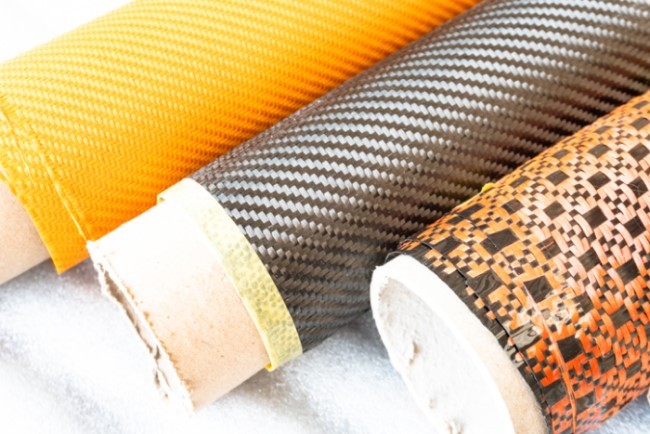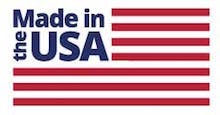When it comes to manufacturing with specialty narrow fabrics, there are plenty of options to choose from. Whether you’re looking for tape, elastic, or heavy-duty webbing, it’s important to pick the right material for the job.
UHMWPE and Kevlar are two of the industry’s most commonly-used fibers; though they are not interchangeable. Below you’ll find a guide to the differences between the two materials, so you can pick the right one for the job.
What is UHMWPE?
Ultra-high molecular weight polyethylene (UHMWPE) fiber is a gel-spun material made up of extremely long chains of polyethylene. UHMWPE is manufactured by several brands—the most prominent being Spectra and Dyneema—and is extremely strong and durable; making it ideal for a number of applications.
Common Uses for UHMWPE
UHMWPE is extremely versatile and thus is used in numerous industries. Some of the most common uses for UHMWPE include:
- Military and ballistic equipment, including body armor and plating
- Recreational activities such as skiing, boating, and fishing
- Critical infrastructure
- Ropes and cordage
- Mineral processing and mining equipment
- Manufacturing
What is Kevlar?
Kevlar is a synthetic fiber made of many inter-chain bonds that are then cross-linked with bonded hydrogen. The large quantity of these bonds works to strengthen the material and create a durable, versatile fiber with a wide variety of applications.
Common Uses for Kevlar
Kevlar is suitable for a number of applications in many different industries, including:
- Fiber optics
- Protective apparel and equipment
- Ballistics and defense
- Automotive belts and hoses
Kevlar’s bonded production process makes it extremely sturdy and ideal for heavy-duty jobs. Plus, its elasticity and flexibility make webbed Kevlar the perfect fiber choice for wearable products.
UHMWPE vs. Kevlar
While UHMWPE and Kevlar are both notable for their strength and overall effectiveness, the two materials do share some differences, and knowing how each fiber differs can help you choose the right one for the job. Below, you’ll find a breakdown of the differences between UHMWPE and Kevlar so you can pick the right one to use given your desired application.
Overall Strength
Due to their bonded production style and scientifically enhanced fibers, both Kevlar and UHMWPE are impressively strong. In terms of numbers, Kevlar is generally considered to be about seven times stronger than steel, while UHMWPE measures in at fifteen times stronger than steel; earning it the title of the world’s strongest fiber.
Energy Absorption
Both UHMWPE and Kevlar have incredible strength and thus can withstand excessive amounts of force. UHMWPE alone has been shown to protect its wearer against dangers such as IEDs and gunshots. However, ballistic tests have proven that Kevlar ranks first when it comes to overall energy absorption.
Resistance to Abrasion
Though both materials have similar strength and energy absorption, the difference between the two becomes more pronounced in their resistance to abrasion. When compared side-by-side, UHMWPE is distinctly softer and smoother than Kevlar. This difference in texture makes UHMWPE more resistant to cuts and abrasion, making it ideal for use in the food industry.
Durability
In terms of overall durability, both UHMWPE and Kevlar rank high above other industrial fibers. However, UHMWPE fibers like Spectra and Dyneema exhibit resistance five times higher than Kevlar—even using just half the number of synthetic materials. This increased resistance gives UHMWPE the edge when preventing cracks or tears.
Heat Resistance and Conductance
When it comes to choosing a heavy-duty webbing that is to be worn in warm conditions, UHMWPE will make for a more comfortable and cool wearing experience. Conversely, Kevlar is the better choice for cooler temperatures as it exhibits impressive insulation capabilities.
Moisture Resistance
UHMWPE is a waterproof material that won’t be weighed down by liquid absorption. This resistance to moisture makes UHMWPE ideal for use in humid or wet conditions, and even in the production of tents and backpacks. On the other hand, Kevlar tends to absorb up to 3.5% of its own weight in water, thus reducing its effectiveness in wet or humid conditions.
Ultraviolet Light Resistance
Ultraviolet light resistance is essential for prolonging the life of heavy-duty fibers that spend a lot of time in the sun. After two full days of UV exposure, Kevlar will lose up to 25% of its material strength, while UHMWPE loses up to 5%; making the latter a better choice for products that will be used mainly outdoors.
Weight and Density
The weight and density of each fiber contribute to its effectiveness in certain applications (such as when used to create a garment). Kevlar’s fiber density weighs in at 1,440 kg/m3, while UHMWPE’s comes out to 970 kg/m3. This lower density makes UHMWPE the less bulky fiber; resulting in a lighter end product.
Wearability
Due to its lightweight nature and overall strength, UHMWPE is generally the better pick when it comes to wearability. Plus, the breathable fabric encourages heat to pass through for a cooler, more comfortable wear. However, Kevlar will ultimately be the better choice in colder temperatures where insulation is essential.
Durability
The durability of a heavy-duty fiber is one of its most important characteristics. Kevlar has a flex life performance of 12, meaning that while it is flexible, it tends to crack and tear after prolonged use. On the other hand, UHMWPE has a flex life of 100, which allows it to maintain its strength and fit over a much longer period of time.
Though Kevlar and UHMWPE have their differences, the two fibers are both impressively strong and durable, making them ideal for a wide range of applications in many industries. OTEX Specialty Narrow Fabrics offers both Kevlar and UHMWPE, so you can compare each and choose the fiber that fits your needs. Visit OTEX today to see everything the leading supplier of heavy-duty webbing has to offer.



